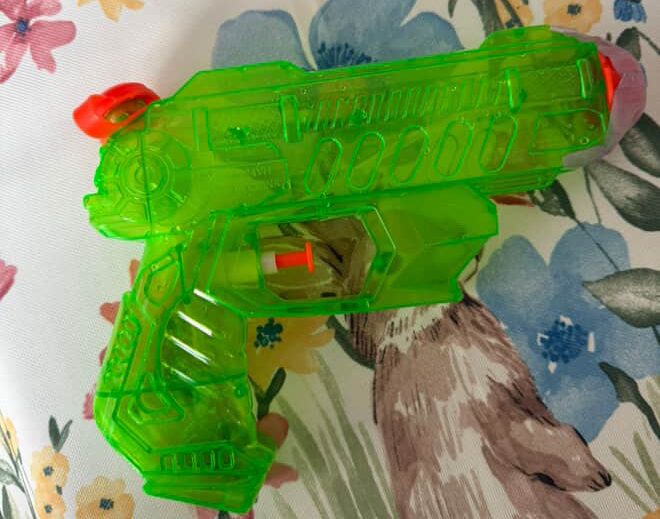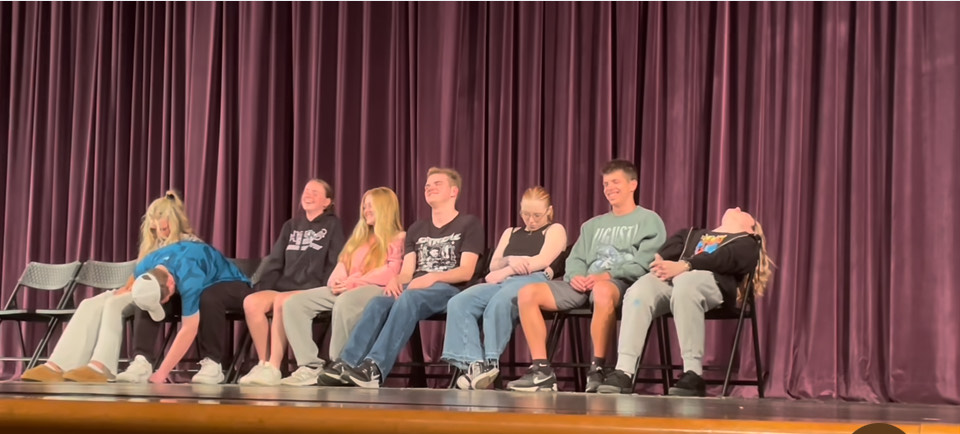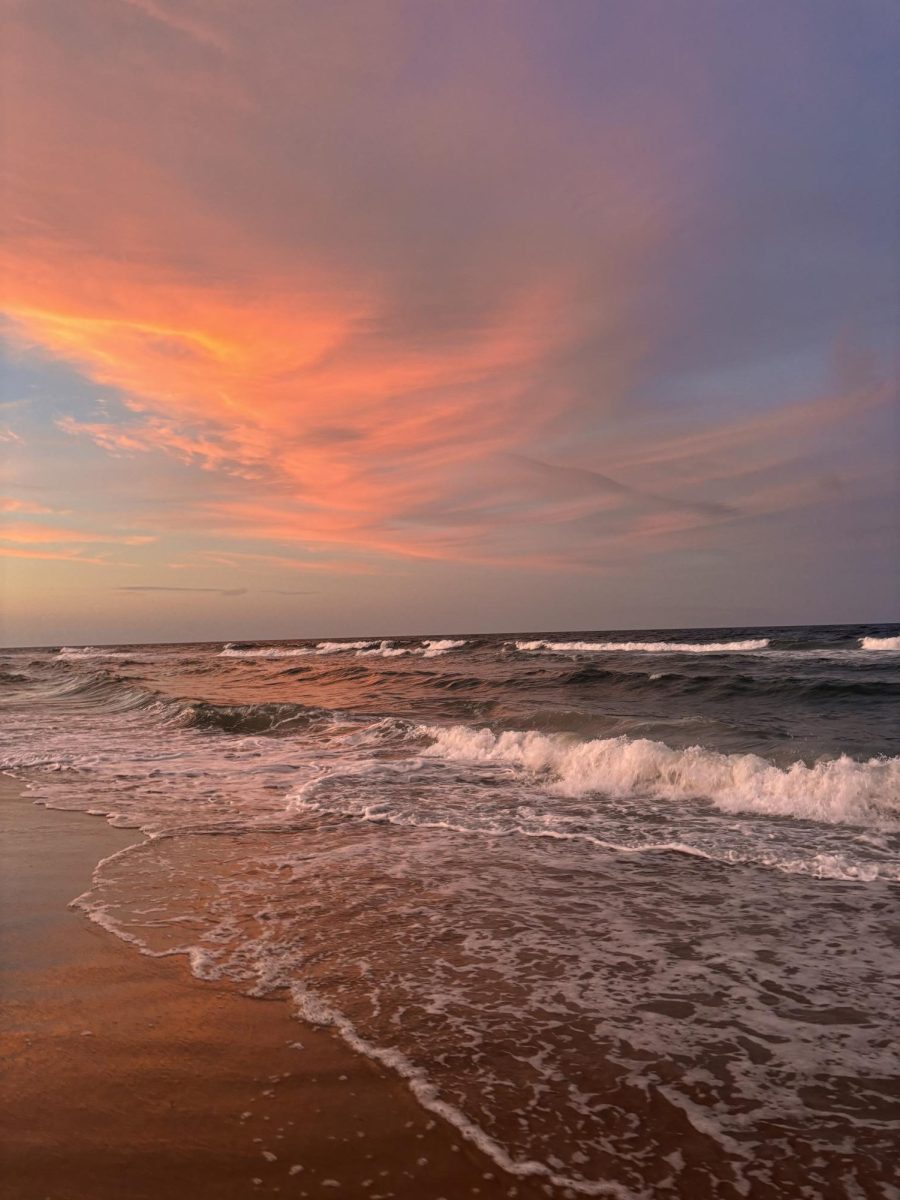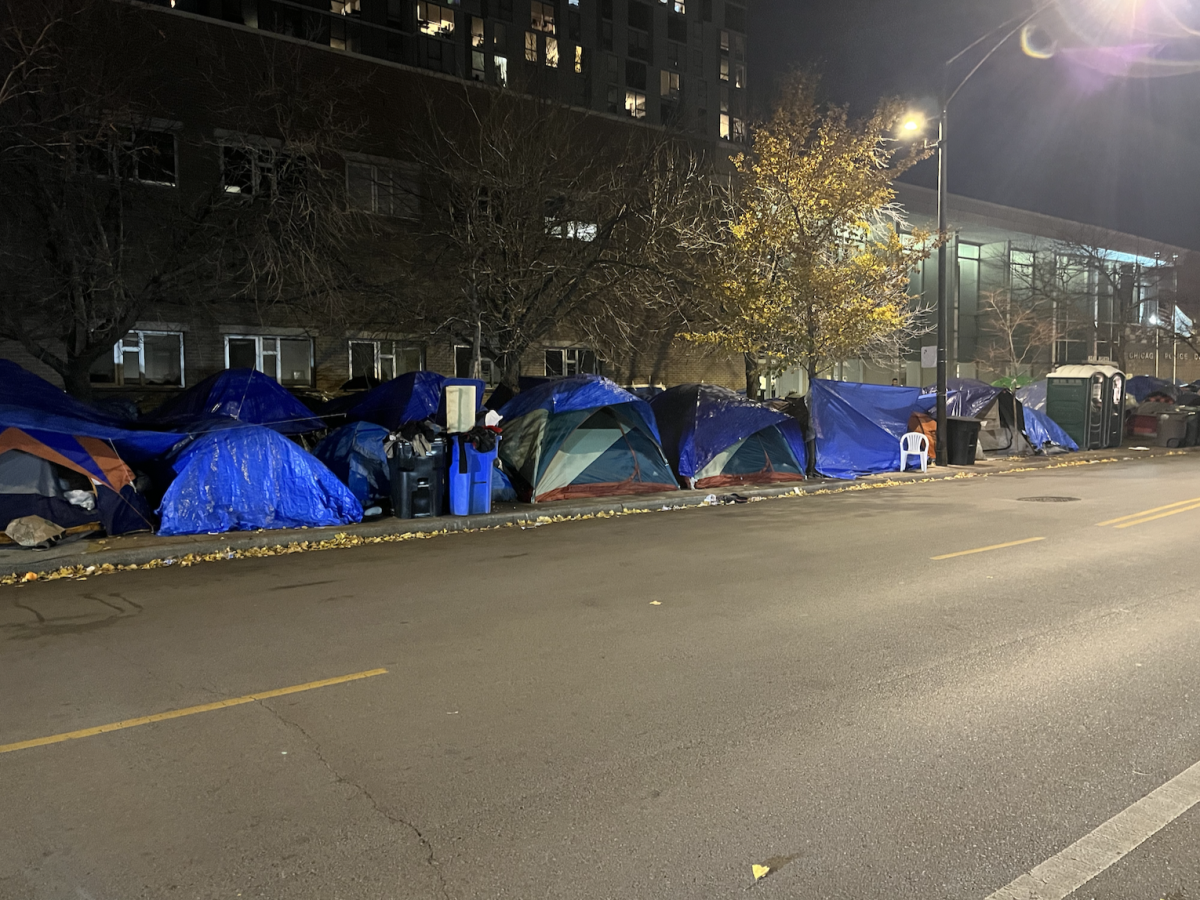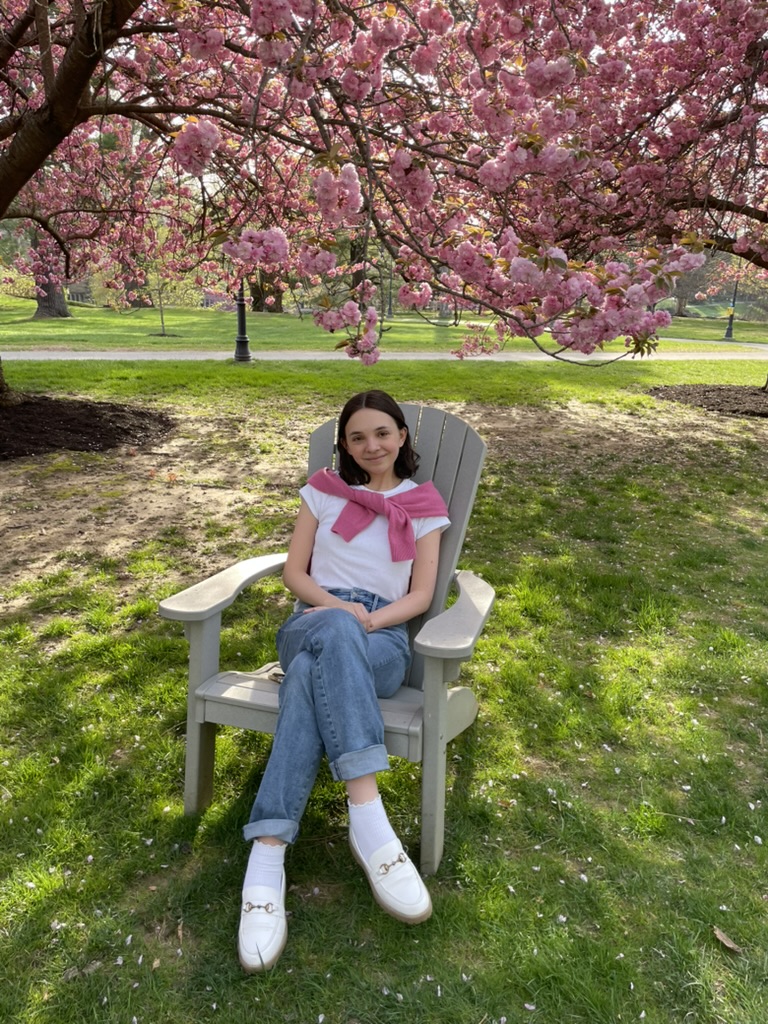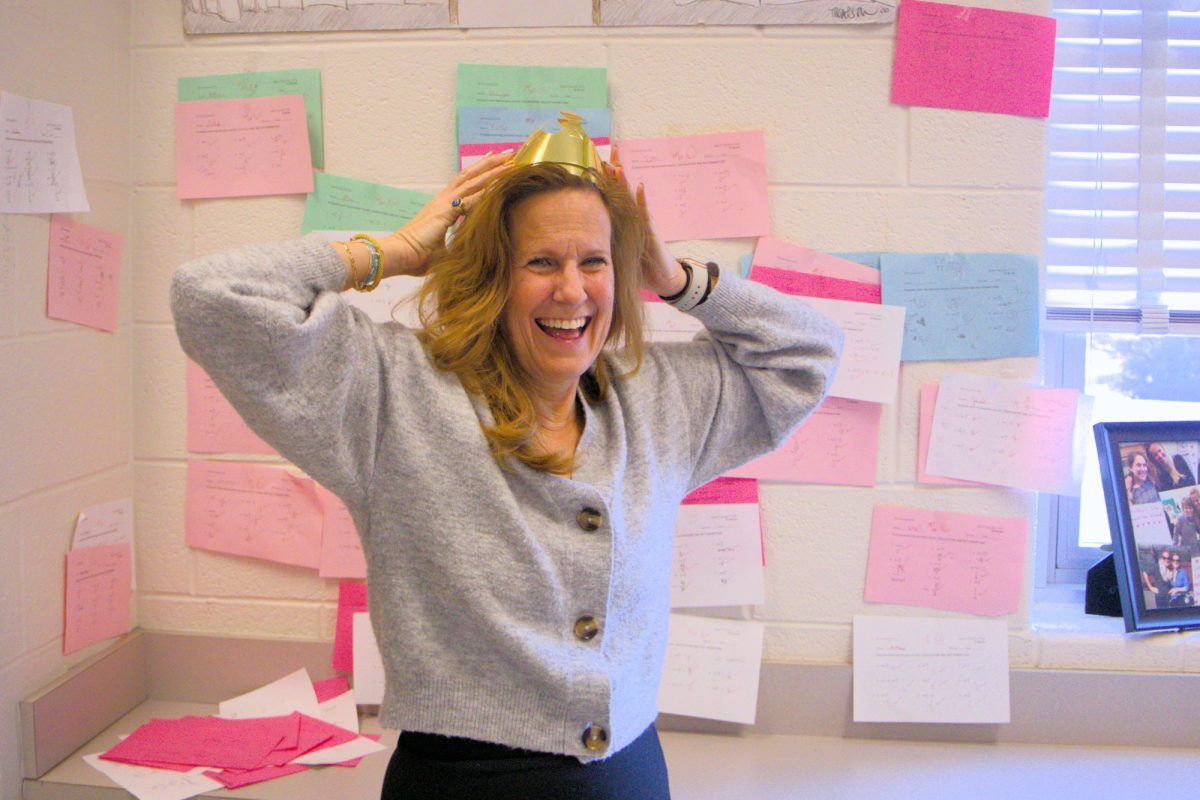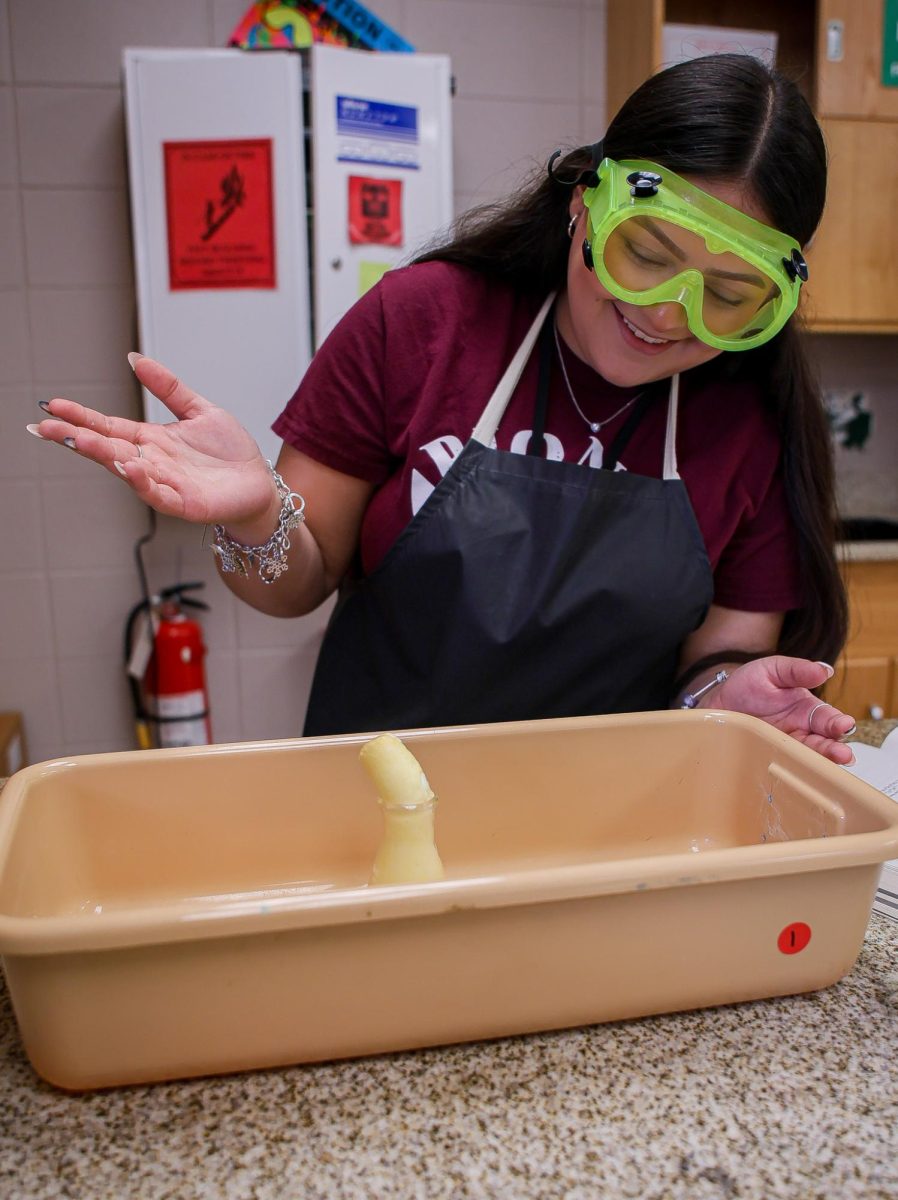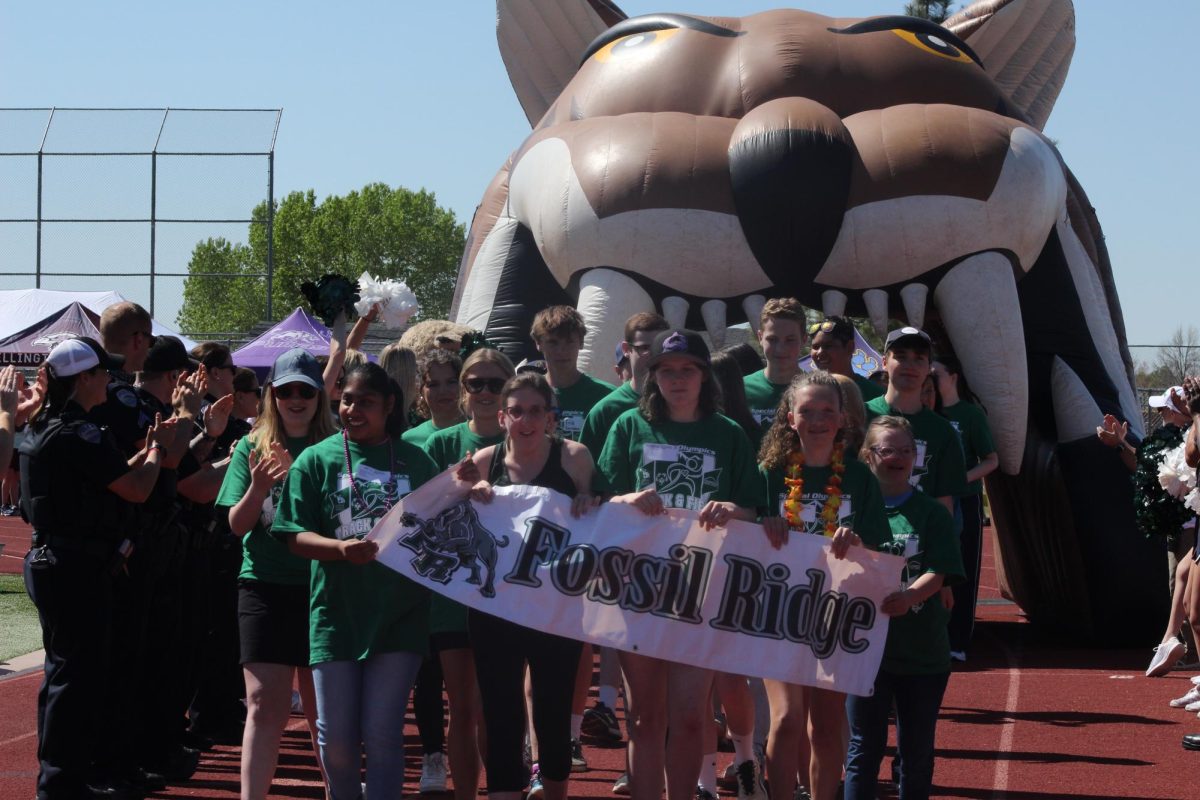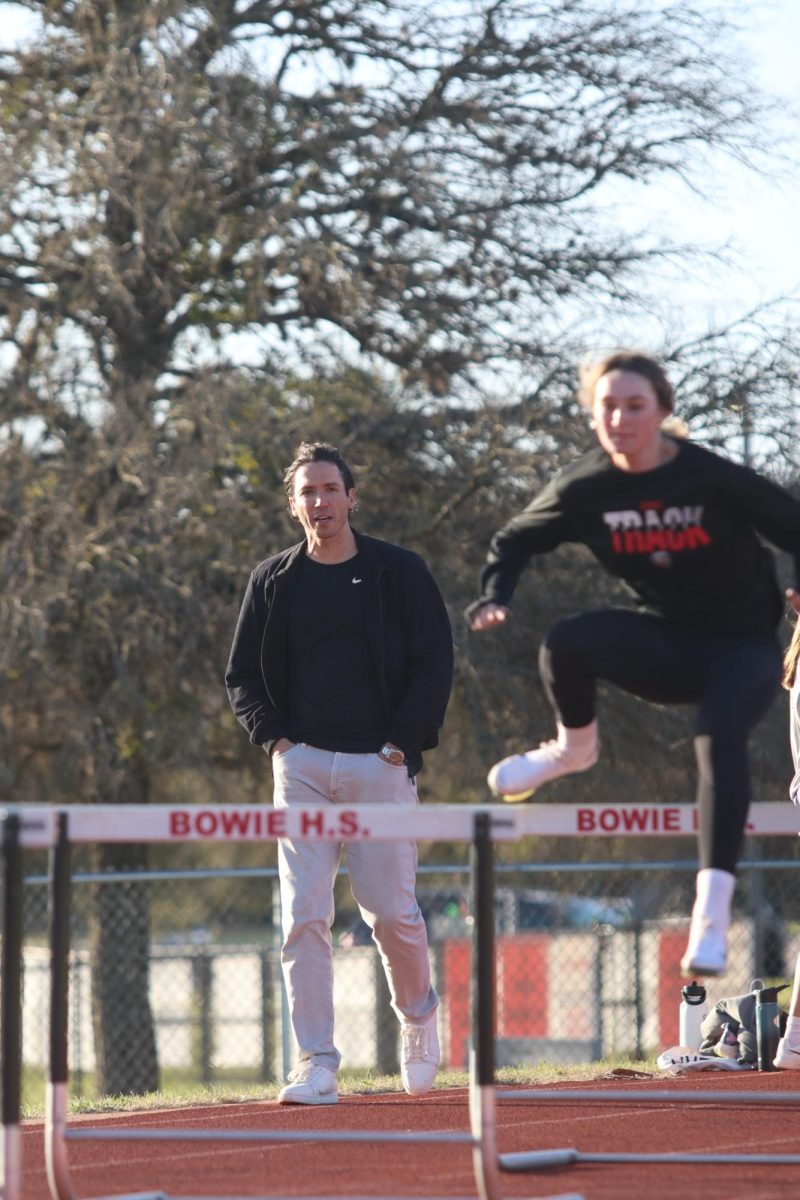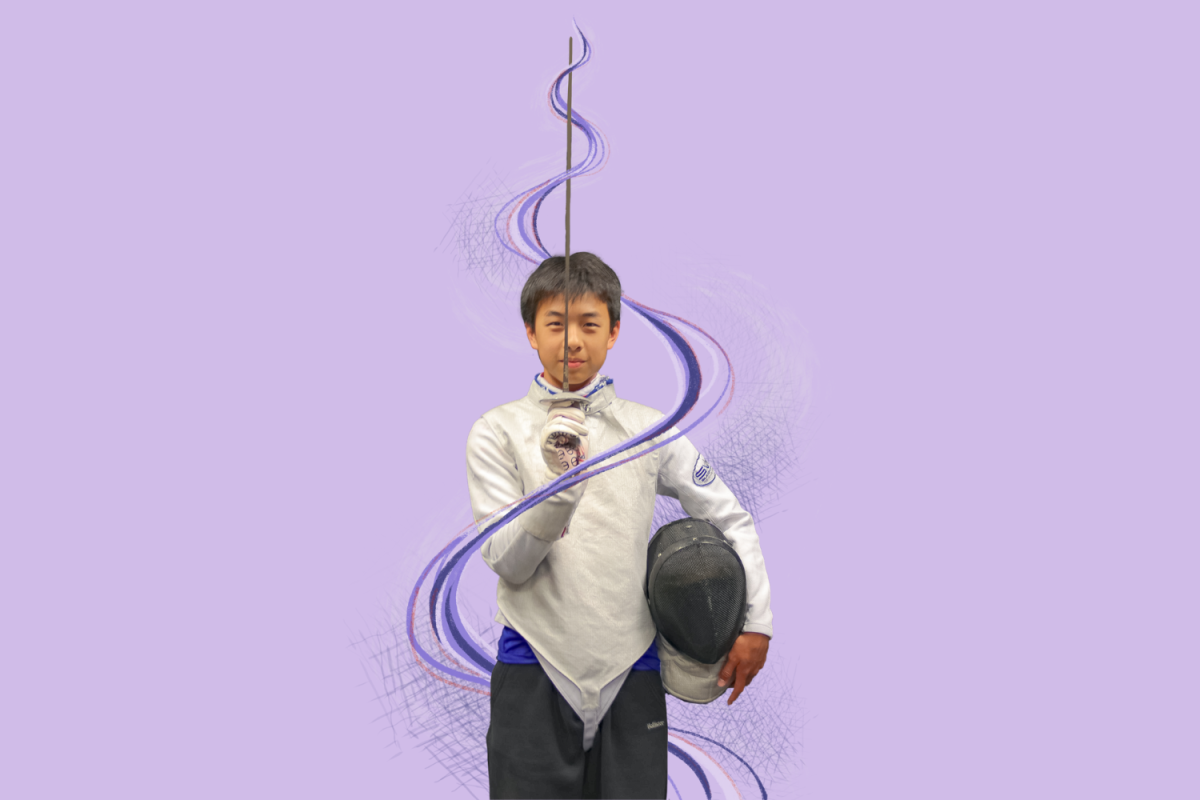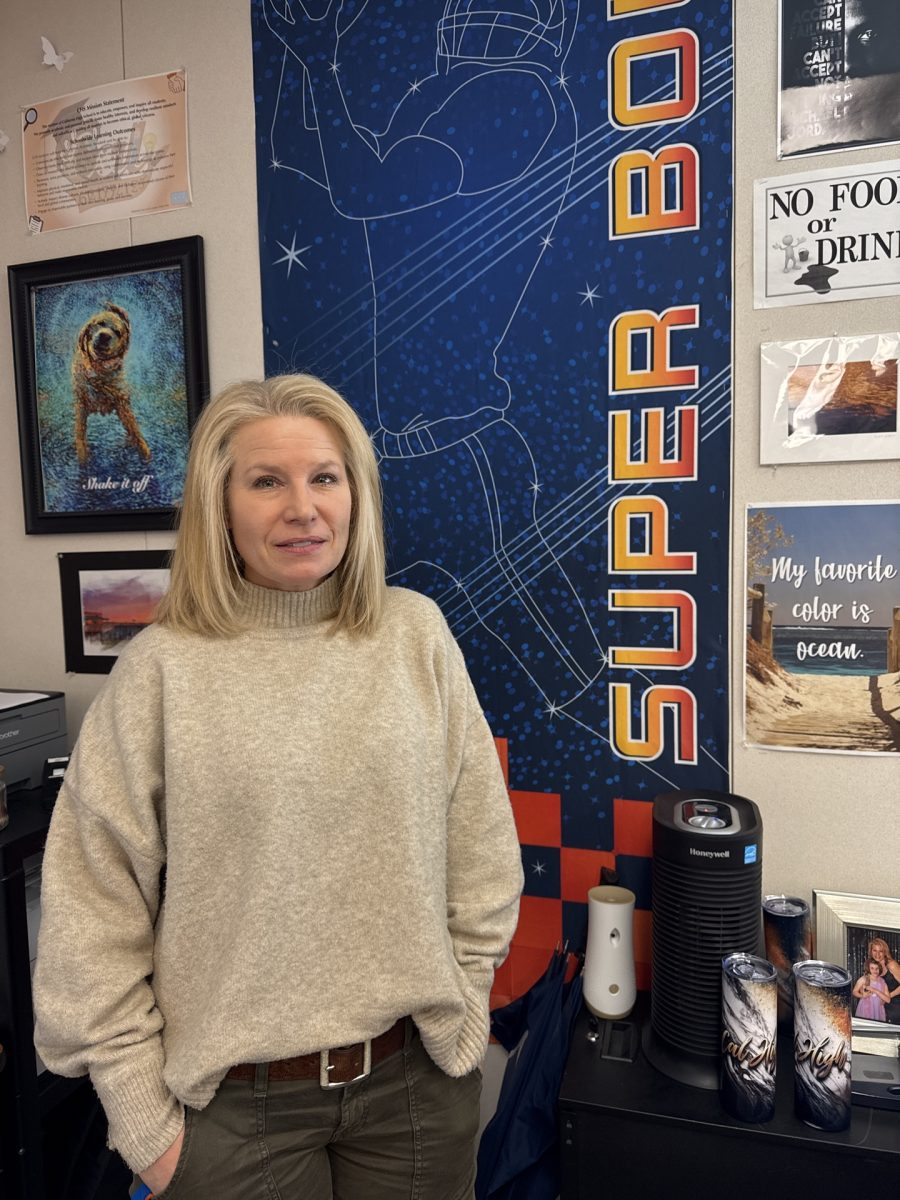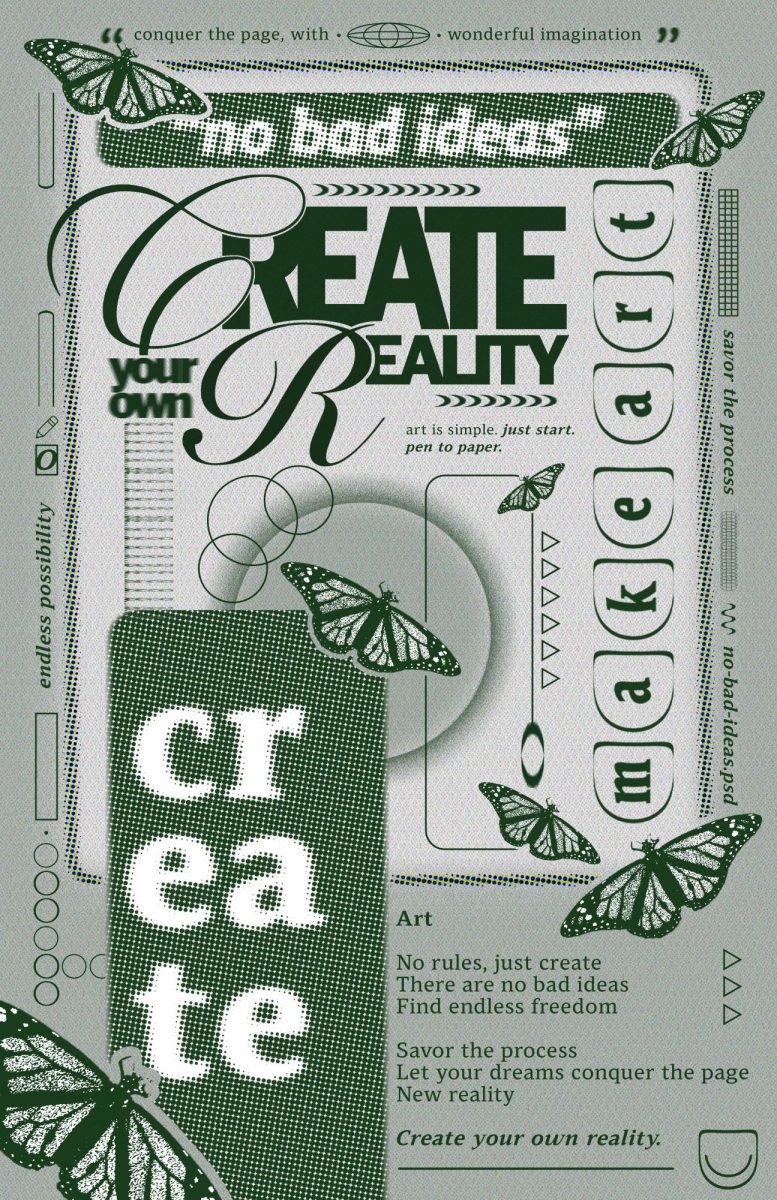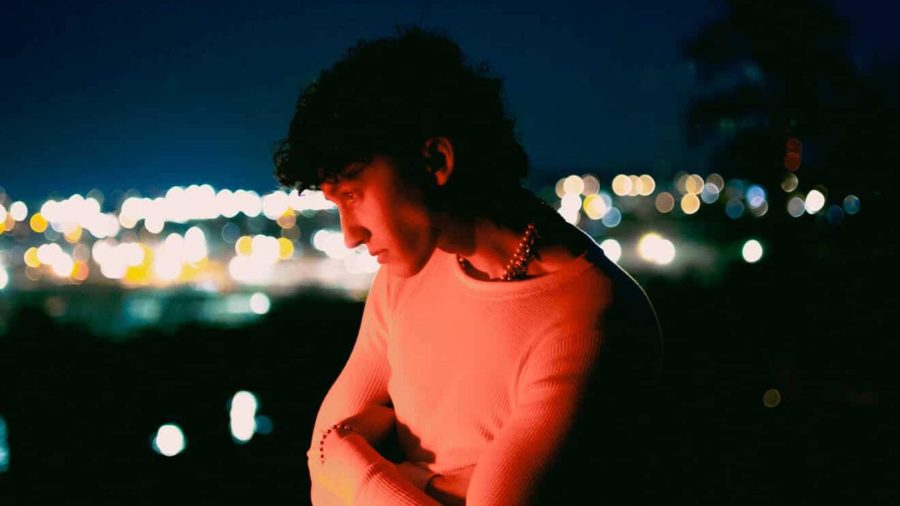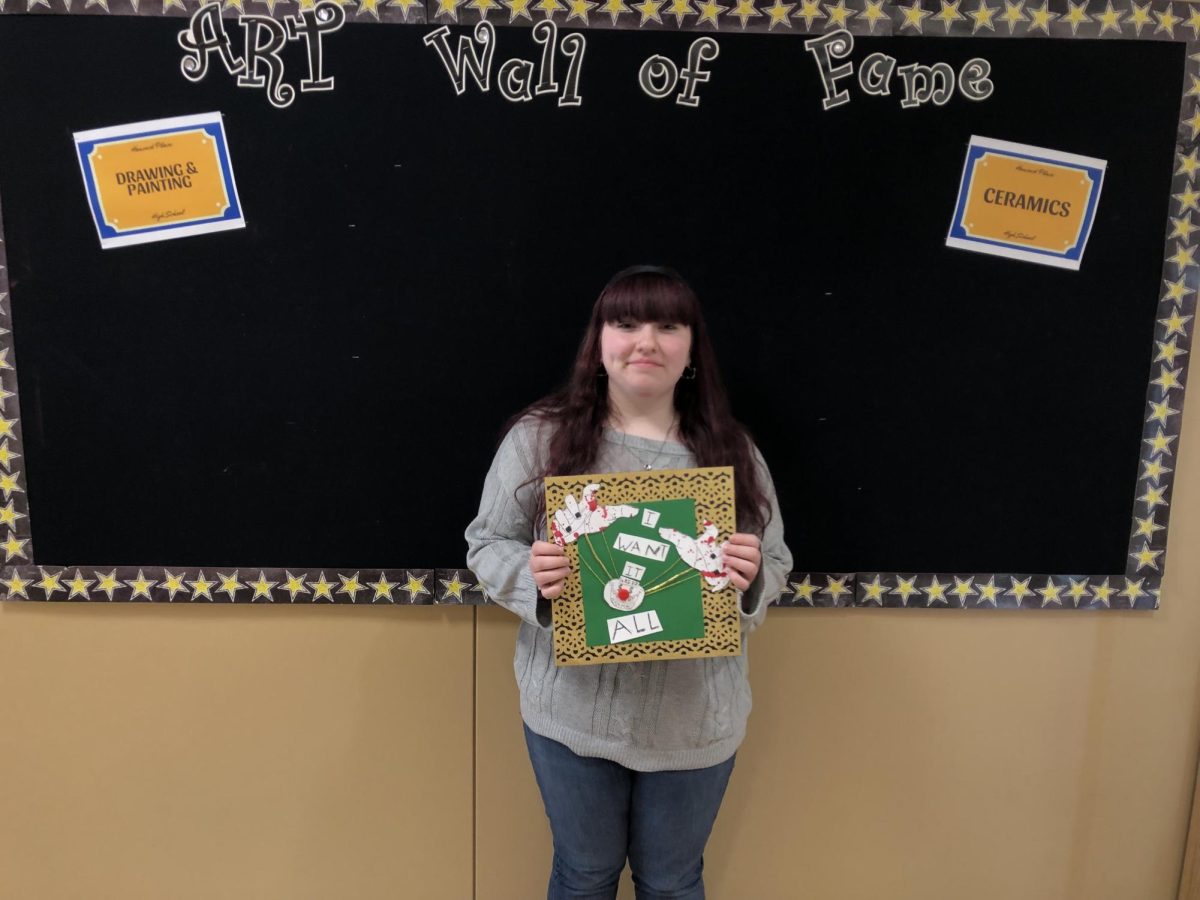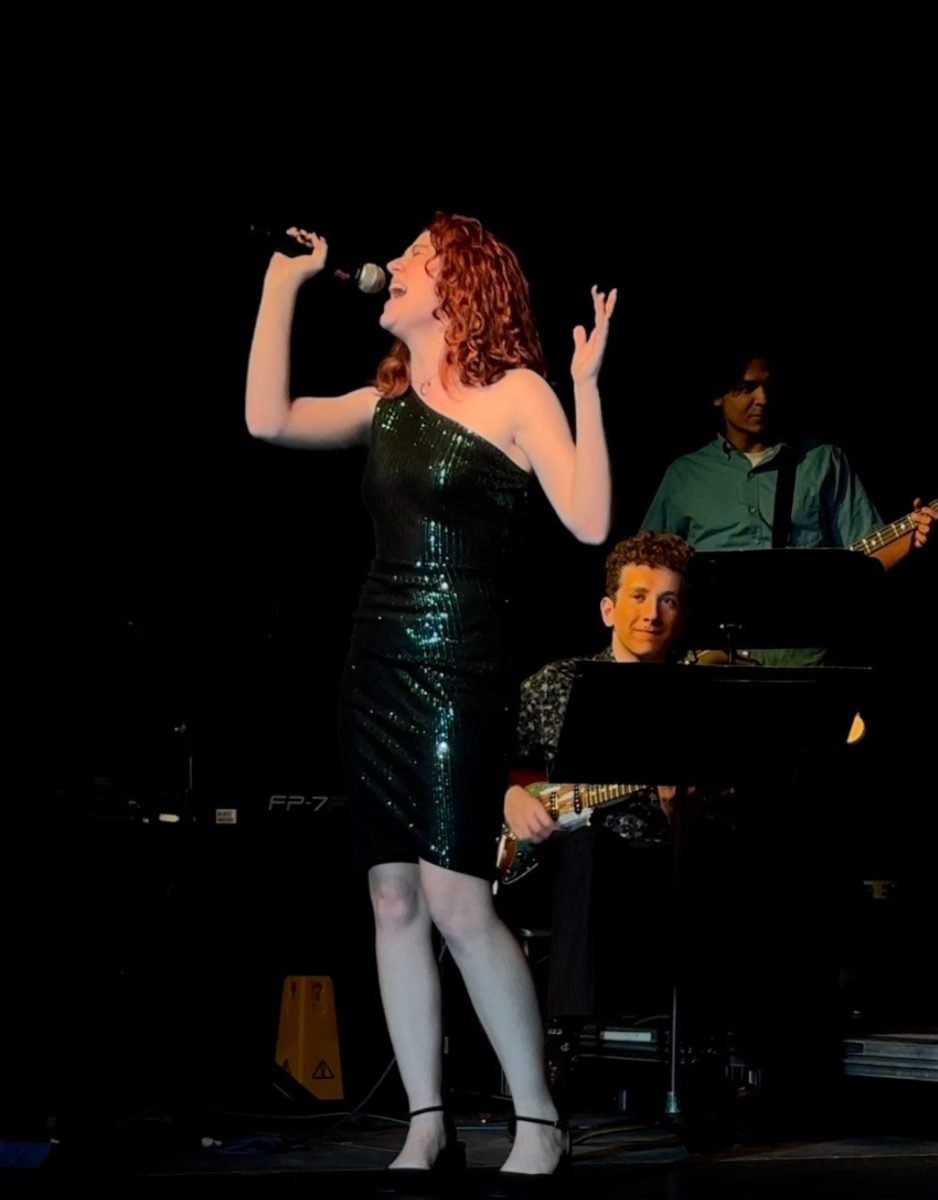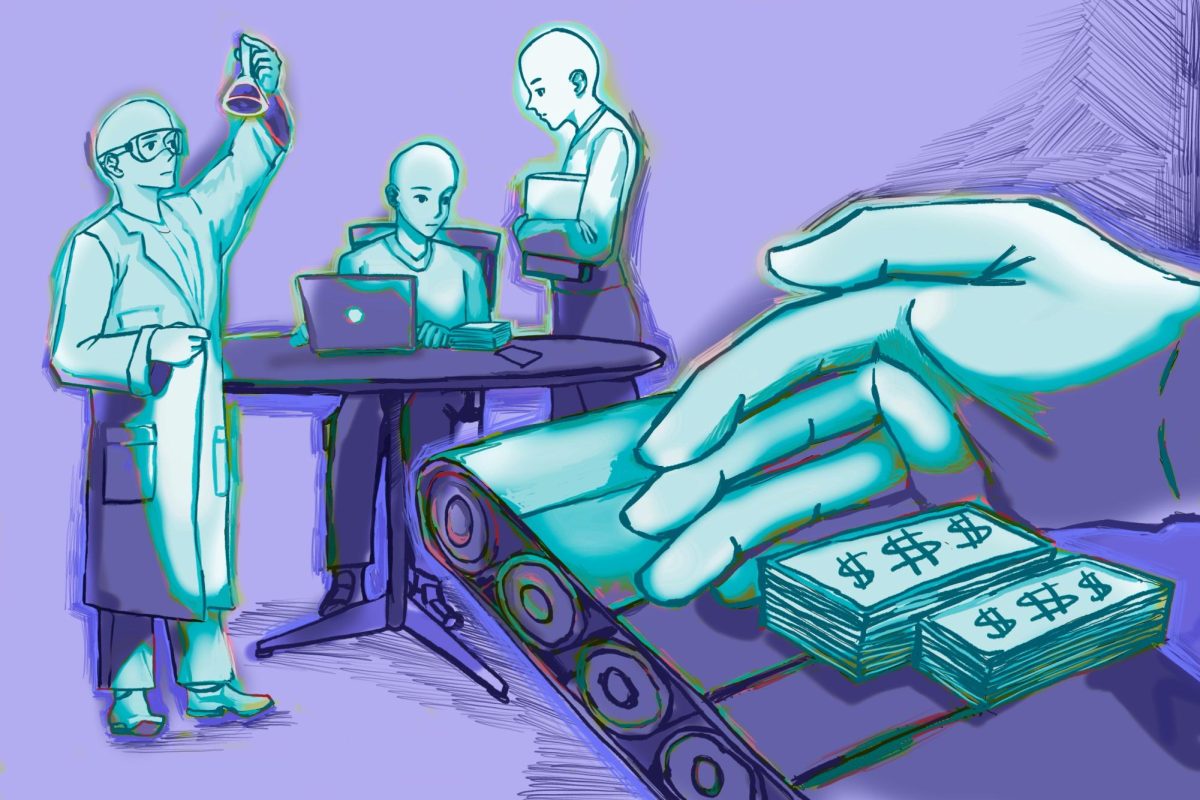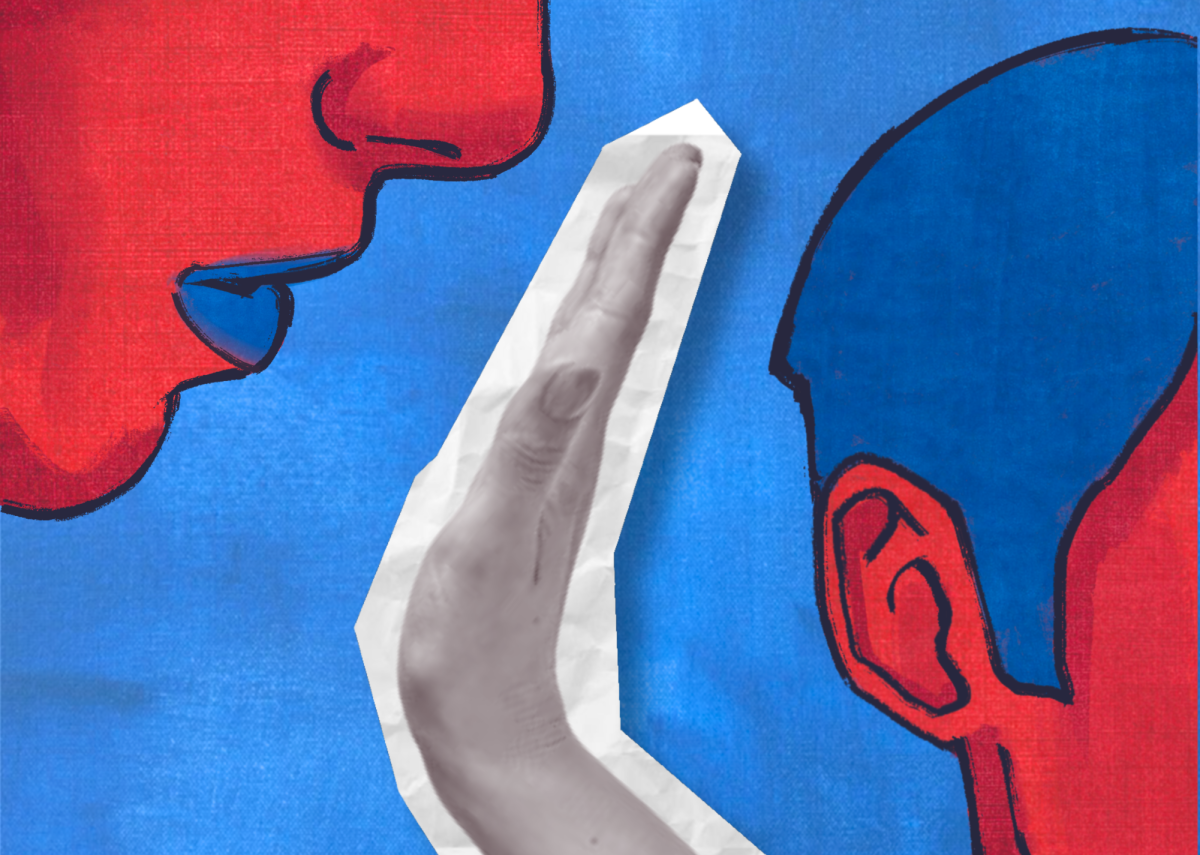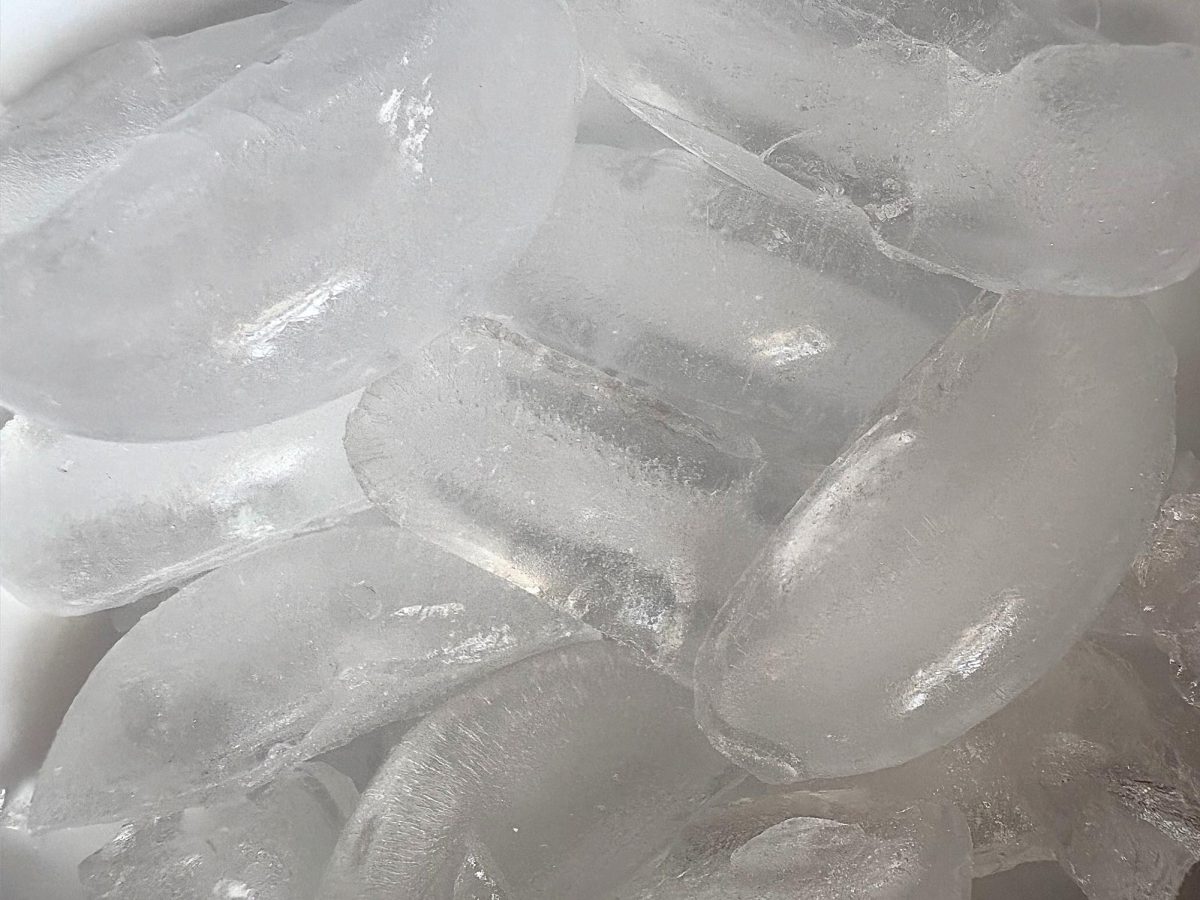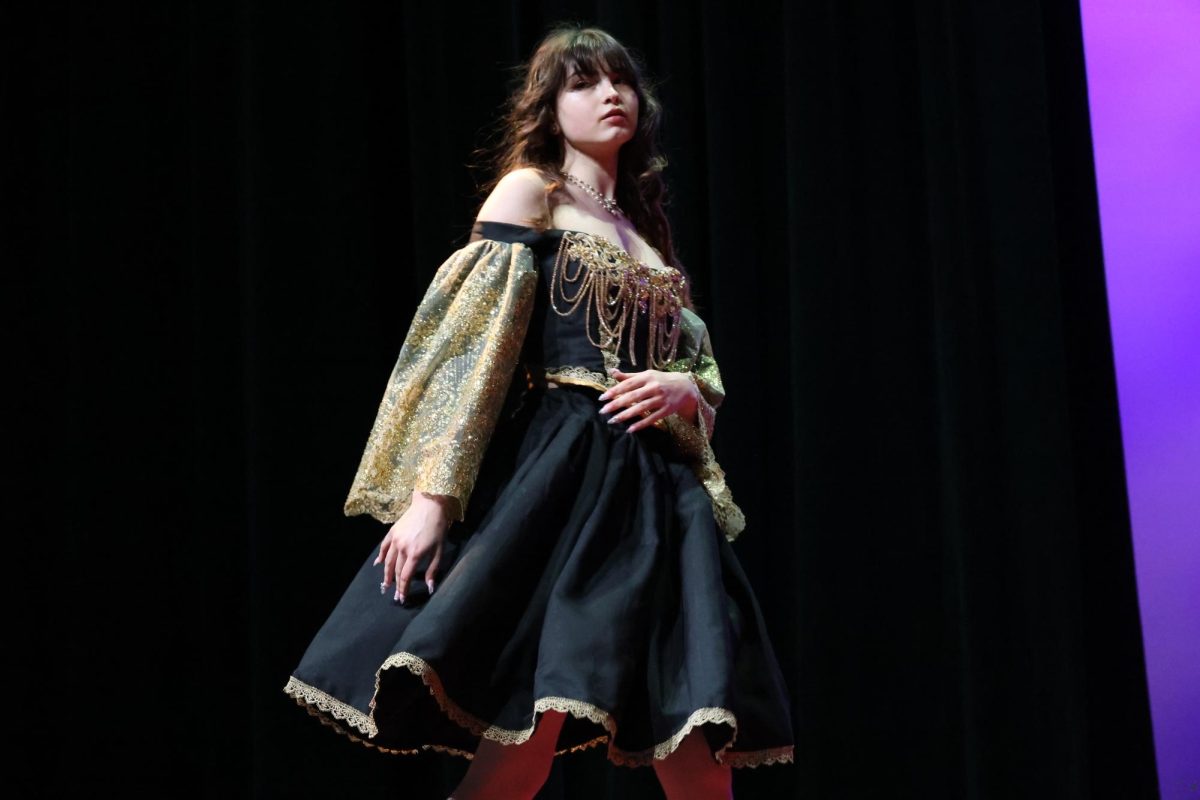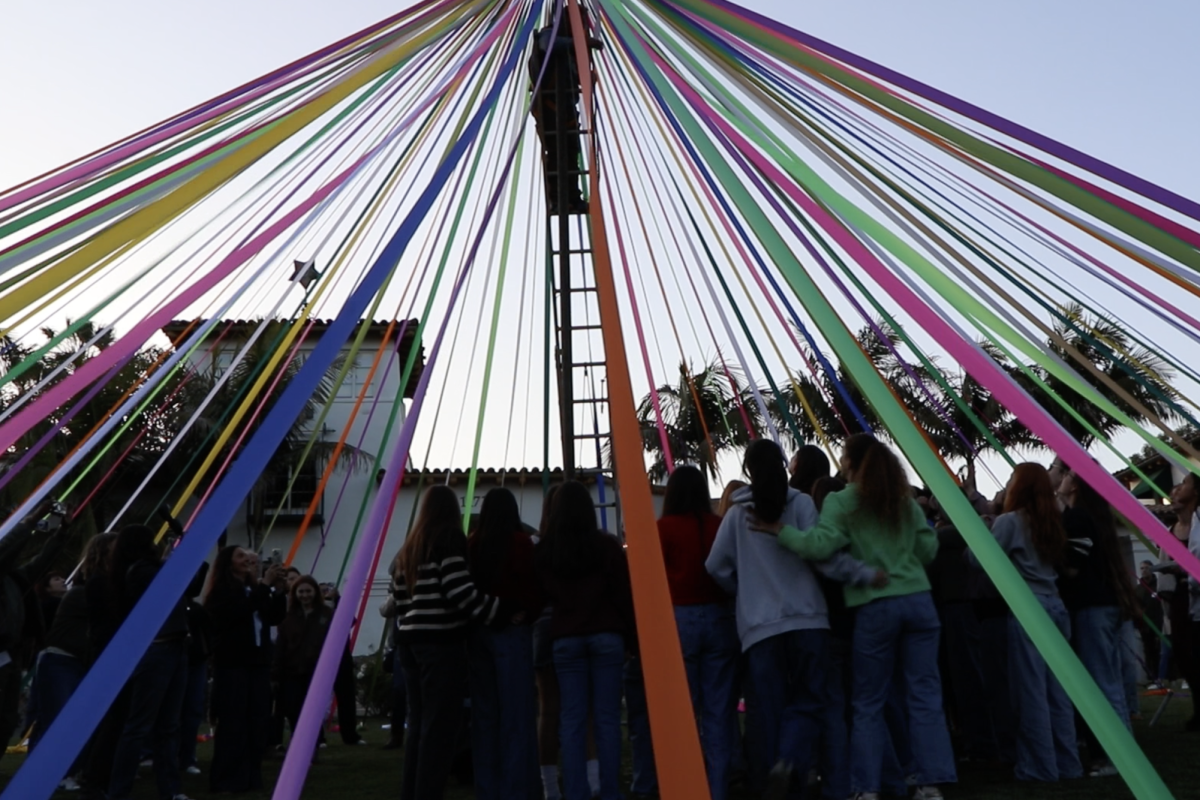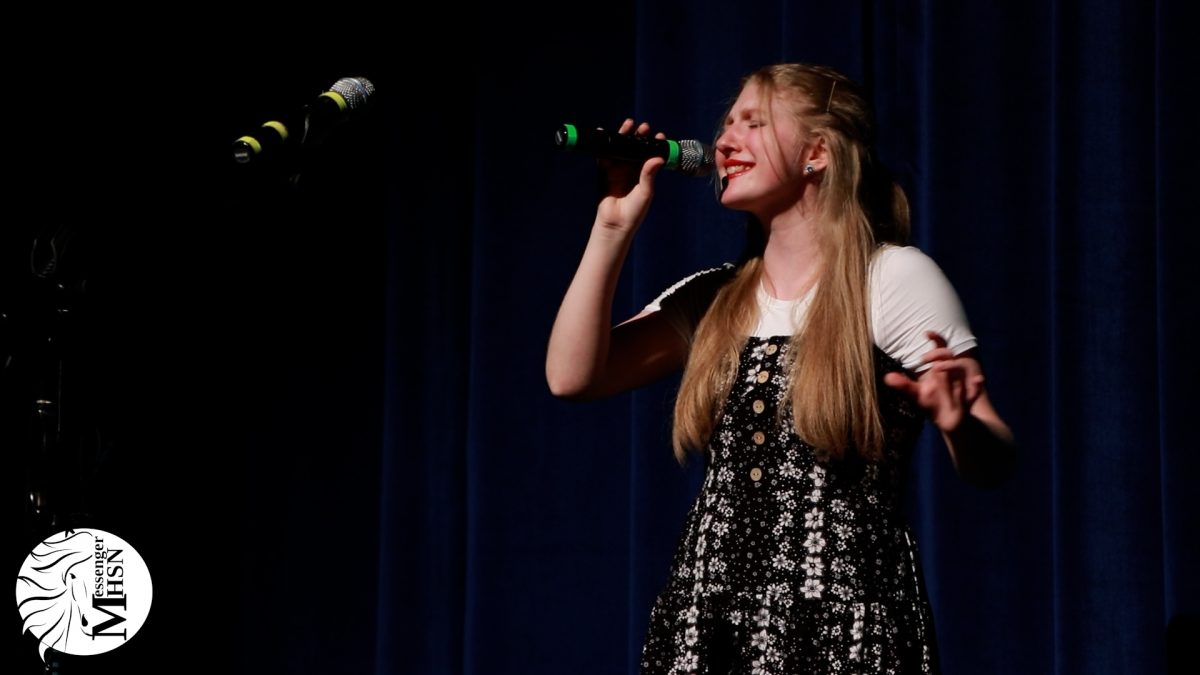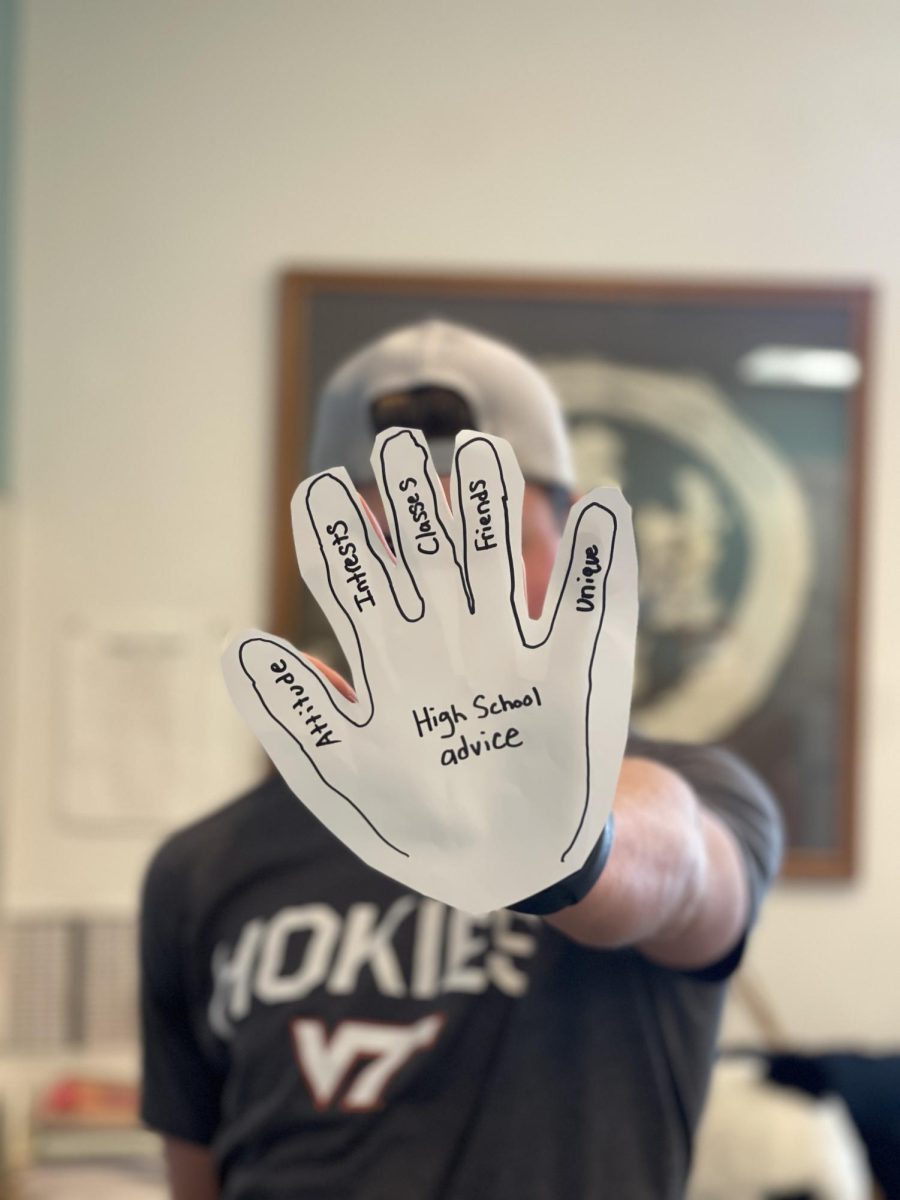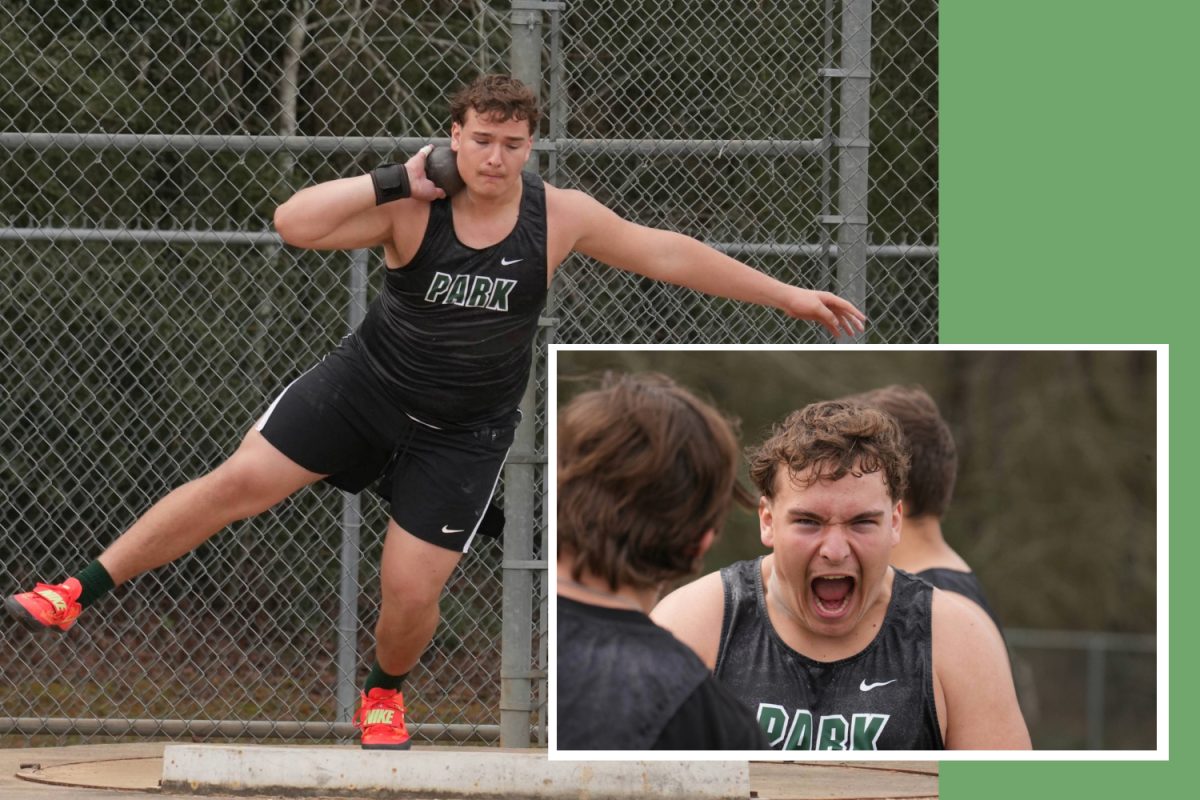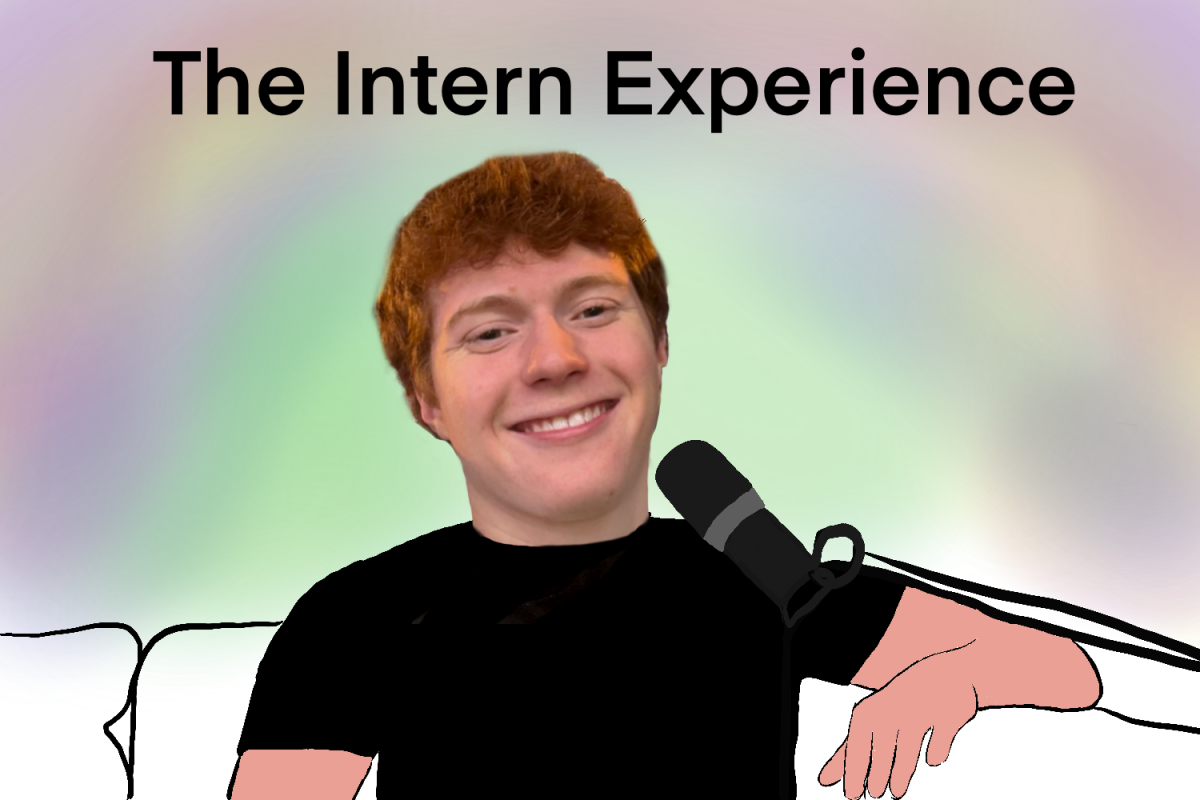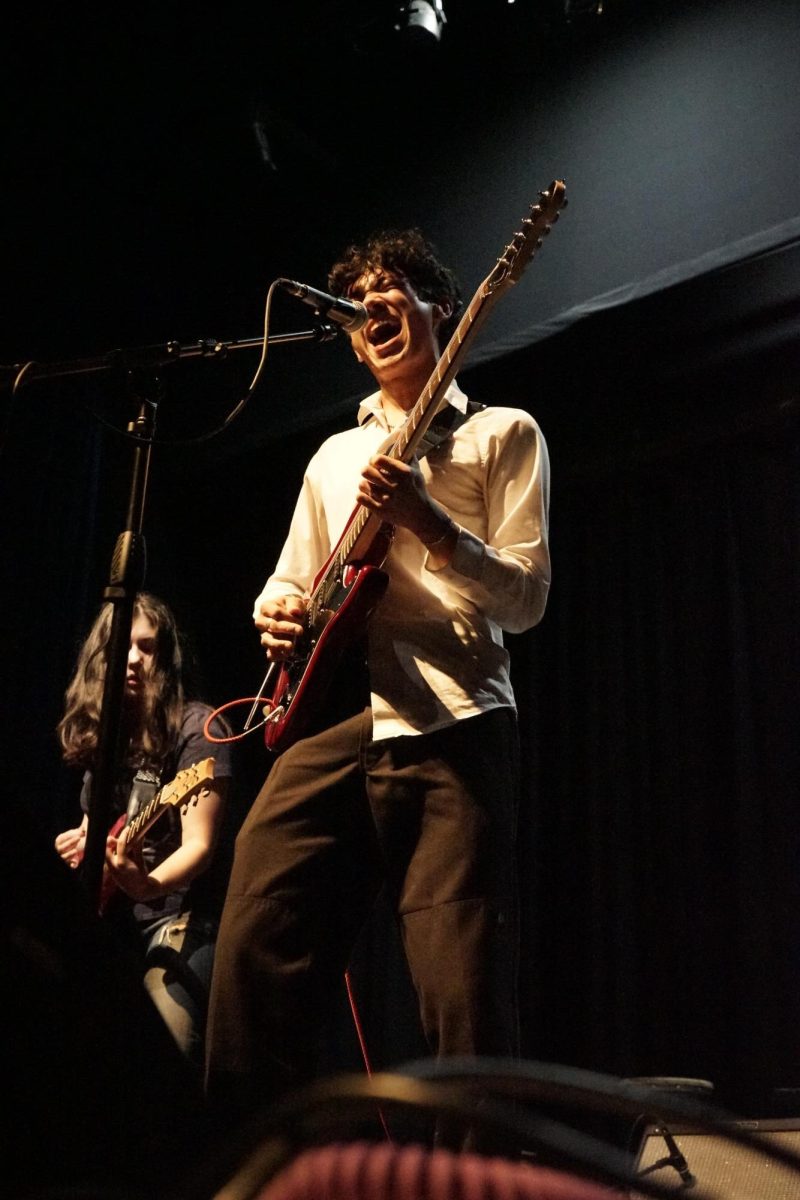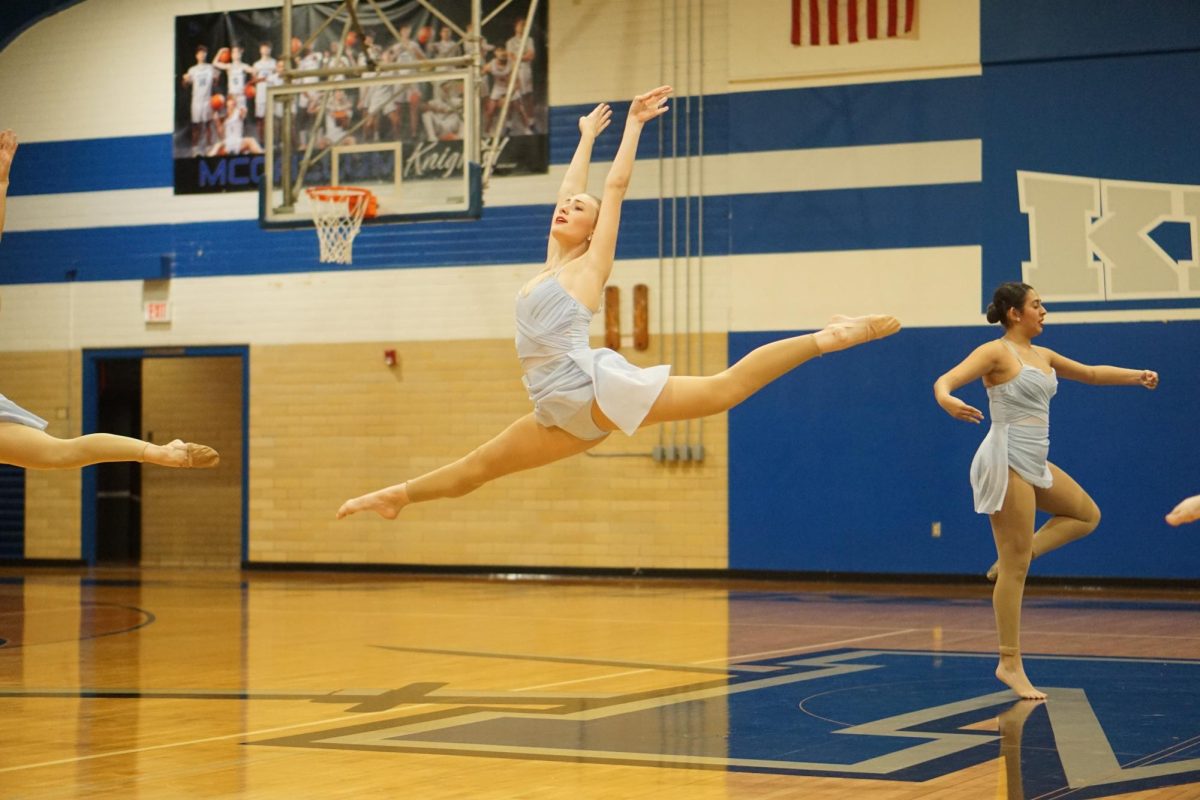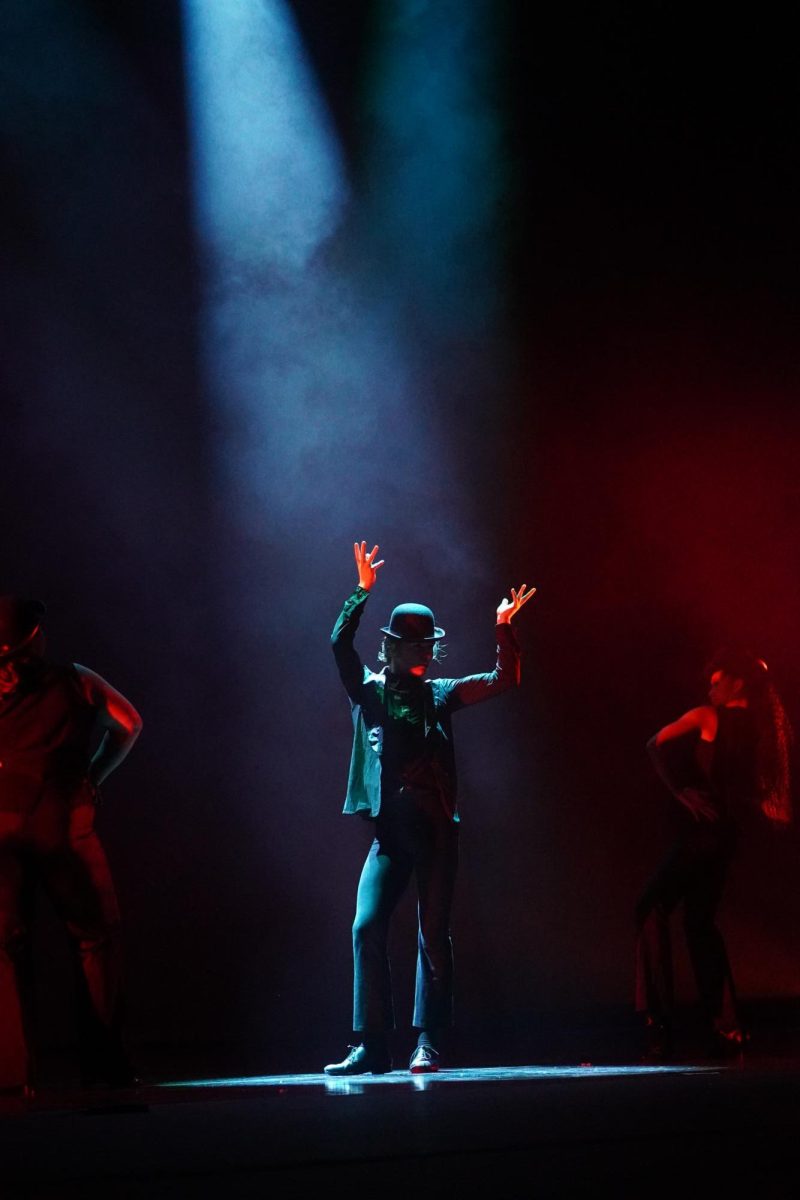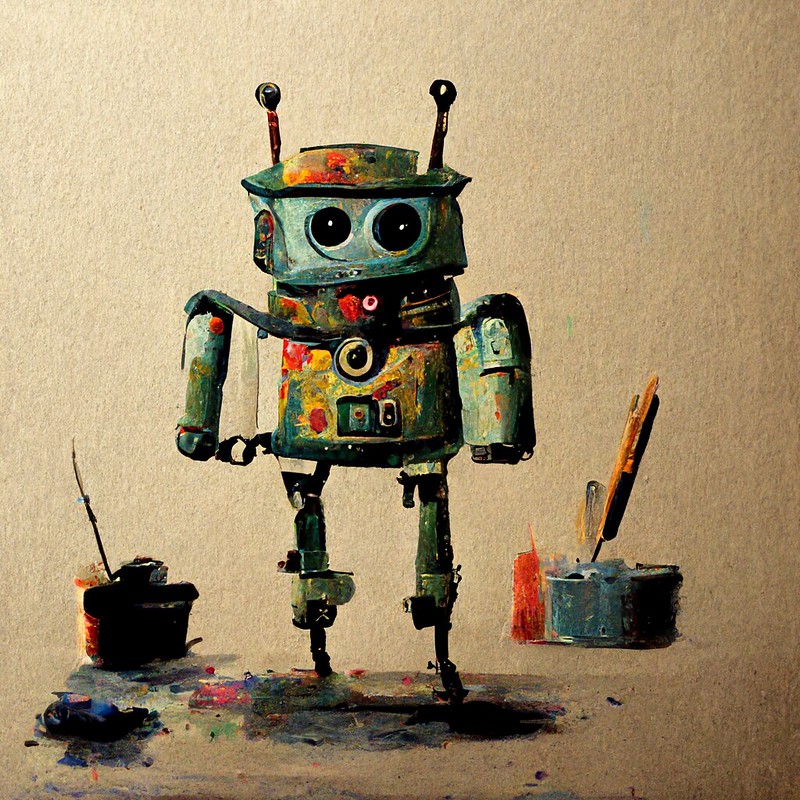The Colorado State Fair and Rodeo Fine arts exhibition is well-renowned, and receives multiple entries annually. This year’s winner is Jason M. Allen, the creator of the piece Théâtre D’opéra Spatial.
The digital art features three renaissance-esque women dressed in graceful, fiery, crimson-colored gowns. They stand on the stage, with their backs to the viewer and gaze at a gaping moon-like opening on a dark wall embellished with intricate carvings. The vibrant colors, jaw-dropping amount of details and precision elicit a sense of royalty and elegance, as if the viewer has snuck backstage to watch a play at the imperial theater. Each detail comes together to contribute and the result is a heavenly painting that exudes creativity.
Therefore, it might be surprising to hear that it took mere seconds for this digital art piece to be completed. In fact, Allen didn’t use a wooden or even digital paint brush. Allen created his piece using the state-of-the-art artificial intelligence (A.I.) platform, Midjourney, which automatically converted his written prompt into digital graphics. Yet, despite the lack of physical effort put into the piece, Allen’s art is visually stunning and is aesthetically at the level of most professional human artists.
As Allen garnered more controversy over his use of A.I. to create his winning art piece, people have started to raise attention to the ethical implications of Midjourney and similar platforms, and whether they could be detrimental to the future of art.
How these platforms work:
The use of AI art technology has skyrocketed over the last 50 years. Artists have created multiple software programs that require users to type in a descriptive command with their desired image in mind.
One such program that integrates deep learning algorithms to create art, is DALLE. According to DALLE, the program was created to “create original, realistic images and art from a text description.” The user interface is simple: the user enters a string of words describing the image they have in mind. Using the information collected from the command, the AI generates a product, referencing thousands of pre-existing works of art that fit the requested aesthetic of the user.
However, the effort that goes into creating AI art isn’t so easy. Deeper meaning and the presence of an artist’s complex thought process are some of the most important elements of art. Without these factors, AI art wouldn’t easily pass as “traditional” human-made art. This is where deep learning algorithms become convenient.
Deep learning algorithms are artificial neural networks that perform sophisticated computations using a wide range of data. These deep learning algorithms involve a type of machine learning that impersonates the structure and function of the human brain, helping AI generate creative and humanistic art. This level of sophisticated abstraction makes computer-generated art truly unique.
The shortcomings of AI art
Even though DALLE and similar platforms are gaining more popularity among technophiles and artists alike, the creativity of the art pieces produced from them is still in question. Unlike human artists, who often use imagery to illustrate a theme, DALLE has no sentience. Even with complex deep learning algorithms, AI has no capacity to feel emotions intensely or understand the human psyche. While useful in creating “superficial art” that is visually stunning, AI falls short when it comes to producing art that conveys complex emotions.
“AI is so different from what I associate with art, since its whole basis is to be neutral and almost emotionless,” junior Jodie Cai said. “For me, [art is] all about the intimacy of the relationship between the artist and the art piece, as well as the emotions conveyed.”
But AI’s inability to understand emotion is not its only weakness. Not all AI art pieces are necessarily visually stunning either. For example, when DALLE is prompted to display an image of Boris Johnson eating fish, the generated art looks nightmarish. There’s even social media accounts, such as Reddit’s r/wierddalle, that document these strange results. DALLE is unable to properly generate realistic human faces, despite using approximately one million images as data. These lapses in the AI’s judgements prove that DALLE, Midjourney, and other platforms are unable to replace photography and art due to their complexities.
AI enthusiast and junior Neel Redkar also believes that AI-generated art is currently not able to compete with the pieces of renowned artists.
“I don’t think in close years [AI] will ever be able to replicate exactly what human artists can produce,” he said, “and it’s very hard for AI to produce an art piece where there are multiple levels of meaning.”
For now, the main use of these AI platforms is for entertainment purposes, creating memes and other amusing images. Redkar often uses DALLE to let his imagination run wild by visualizing his ideas.
“I can’t draw, so DALLE allows me to make funny things and draw my random ideas,” he laughed.
Negative effects of AI art:
While some people may use AI art platforms for fun, for other artists, it poses a threat. The influence of AI art in the future can play into how much artists get paid, and what type of art is created in the future.
Dougherty Valley High School art teacher Ashley LeMay has an undergraduate degree in textiles and has extensive experience working with digital art programs such as Adobe Photoshop and Illustrator in college. Despite her love for the digital arts, LeMay is doubtful of AI generated art.
“We all interpret the information we’re given in different ways…I think [AI is] less creative because it doesn’t have a whole life, opinion set or a moral code to process this information.”
On the contrary, LeMay likes the idea of this type of AI being used as an “idea generator.” The option of AI art being an inspiration could be an alternative method for artists who may be short of ideas. Since AI pulls references from an extensive database of images, there is no limit to the possibilities it presents. Every type of art, from realism to cartoon has been created just by analyzing previously existing art.
Though AI’s ability to renew preexisting images may be seen as innovative, concerns about the ethics of this method have risen. Could replicating parts of images be considered plagiarism? Where is the line between “taking inspiration” from an image and copying it?
For LeMay, the answer is not so simple. She does not believe the referencing technique AI uses is flagrant plagiarism.
“If you’re meshing enough styles, techniques, and themes together, [the art piece] is your own” she said.
However, this revives the question of creativity. Artists are able to pull specific ideas from art, such as a message, or a style, whereas AI will scan the art piece as a whole. Compared to human minds, Lemay finds that an AI’s thought process is more “black and white.” It is not only the creativity and techniques AI art generates that is being criticized. The simple existence of this kind of art has very big implications for the world of artists.
According to zippia.com, since 2000, at least 260,000 jobs have been lost due to automation, such as accountants and bookkeeping clerks. Since these occupations involve analyzing patterns and calculating large figures, they were easily carried out by AI programs.
However, it was unthinkable that pattern-based AI would be capable of replacing occupations involving creativity and the human thought process. AI generated art proves this wrong. The technology is still underdeveloped, but rapidly improving itself. It may only be a matter of time until careers in art succumb to the automation of jobs occurring today.
Safeguarding AI technology:
With all of the issues that AI-generated art software raise, some believe that action should be taken to prevent AI art pieces from replacing the work of human artists. To prevent situations like AI art winning the Colorado State Fair from happening again.
Cai is pessimistic about the coexistence of AI art platforms and human artists, especially due to recent advancements of AI.
“Honestly, I don’t know how you would safeguard [AI art] because AI has progressed to a point where it’s so powerful and can recreate something almost exactly,” she said.
While safeguards are undoubtedly difficult to enforce, there may be some ways to prevent the improper use of these AI art platforms.
One potential solution involves using artificial intelligence itself: AI that differentiates AI-produced art from human-produced art. Two Swiss scientists have already developed an Art Recognition algorithm to detect art “fakes” among replicas of a famous painting, La Horde. With the rapid development of neural networks that specialize in classification, building an AI model that can detect AI “fakes” is not out of the question for AI researchers.
A less complex alternative to using artificial intelligence for AI fake art detection is a required watermark for every picture created with AI art platforms. However, this comes with major caveats, such as removal of these tags by people using the AI art generators with Photoshop. Some artists may not even know that platforms such as DALLE or Midjourney exist, so watermarks may be pointless.
Talking about the Colorado State Art Fair fiasco, Cai explains that judges of the fair likely did not expect a contestant to use a platform like Midjourney to complete their art piece.
“Because all of the other entries are so innocuous and are simply things that an artist made to express a certain thought or concept, you wouldn’t expect the piece to be created from what the creator expressed to a platform, which digitally creates the art for them,” Cai said.
Despite the potentially harmful impact of AI art platforms on artists, Redkar believes that platforms such as DALLE and Midjourney still have the ability to transform the art landscape to guide artists.
“I think AI could be used in a similar way to how the Lasso tool in Photoshop is used today,” he explained. “You could use DALLE to generate a new scene, crop that scene into a painting you’re working on, and make some changes to add it in as a background.”
As AI art advances, so does the extensive list of drawbacks that come with this technology. While implementing laws and markers may be a possible solution to hinder abuse of this advancement in technology, it’s up to us whether we choose to view this as a treasure or tragedy in art’s future.
This story was originally published on Wildcat Tribune on October 6, 2022.

